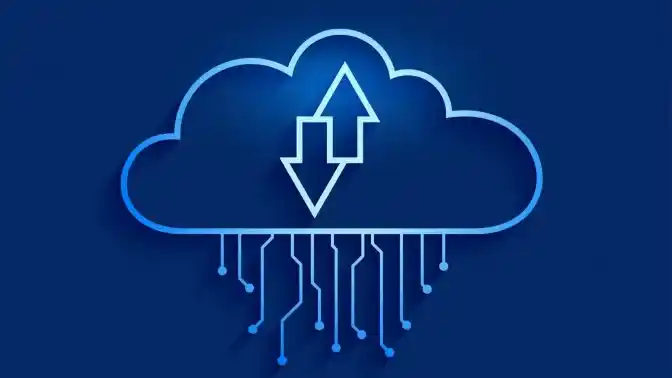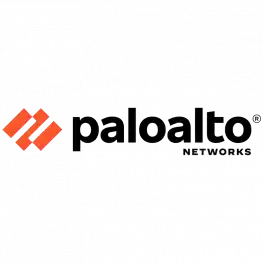Table of Contents
Cloud Security Posture Management (CSPM) is essential for safeguarding cloud environments against security risks and ensuring compliance with industry standards. CSPM solutions help organizations maintain a strong security posture by continuously monitoring, assessing, and remediating vulnerabilities.
This article explores five proven tools that boost Cloud Security Posture Management, providing enhanced visibility, automated threat detection, and compliance management, all critical for securing modern cloud infrastructures against evolving cyber threats.
What is Cloud Security Posture Management?
Cloud Security Posture Management (CSPM) involves continuously monitoring and managing cloud infrastructure to identify and address security risks and compliance issues. CSPM tools help organizations ensure their cloud environments adhere to best practices by detecting misconfigurations, vulnerabilities, and policy violations.
By automating risk assessment and remediation, CSPM enhances security visibility, reduces potential threats, and helps maintain compliance with regulatory requirements, ultimately strengthening the overall security posture of cloud-based systems.
How CSPM Works:
- Cloud Provider API Integration: CSPM tools link to cloud provider APIs to spot key risks boosting cloud safety.
- Configuration Checks at All Levels: CSPM lets you check settings at the cloud, app, and host levels. This helps you find and fix setup issues beyond just the cloud layer.
- Automatic Spotting and Fixing: CSPM tools spot and fix set-up cloud resources. For example, they can find AWS S3 buckets that anyone can read. This cuts down on breach risks and helps follow rules better.
- Works with Multiple Clouds: Companies use CSPM in public and multi-cloud setups to handle risks well and keep their cloud setup safe.
Key Features of Cloud Security Posture Management

- Continuous Monitoring: CSPM tools monitor cloud environments for misconfigurations, vulnerabilities, and compliance violations.
- Automated Remediation: Some CSPM solutions offer automated remediation to fix security issues without manual intervention.
- Compliance Management: CSPM helps organizations meet various regulatory requirements (like GDPR, HIPAA, PCI-DSS) by ensuring their cloud environments comply with the necessary standards.
- Threat Detection: CSPM tools can detect potential threats by analyzing cloud configurations and user behavior patterns.
- Visibility: CSPM provides detailed insights into the security posture of cloud resources, often through dashboards and reports.
- Risk Assessment: These tools assess the risk level of different cloud assets, helping prioritize remediation efforts based on the potential impact of each issue.
Importance of Cloud Security Posture Management
- Preventing Misconfigurations: Cloud Security Posture Management helps identify and correct cloud resource misconfigurations, which are a leading cause of data breaches in cloud environments.
- Ensuring Compliance: CSPM tools automate the process of aligning cloud environments with regulatory requirements like GDPR, HIPAA, and PCI-DSS, reducing the risk of non-compliance penalties.
- Continuous Monitoring: CSPM provides real-time monitoring of cloud infrastructure, allowing organizations to detect and respond to security threats promptly.
- Enhancing Visibility: With Cloud Security Posture Management, organizations gain a centralized view of their cloud security, making it easier to track and manage security risks across multiple cloud platforms.
- Automating Remediation: CSPM solutions often include automated remediation features, which help quickly address identified vulnerabilities, minimizing the window of exposure.
- Risk Assessment: CSPM tools evaluate the risk levels of cloud assets, enabling organizations to prioritize their security efforts based on the potential impact of vulnerabilities.
- Reducing Complexity: By providing a unified approach to managing security across various cloud services, Cloud Security Posture Management simplifies the process of maintaining a strong security posture.
- Supporting DevSecOps: CSPM integrates security into the DevOps process, ensuring that security practices are embedded throughout the cloud infrastructure lifecycle.
Popular Cloud Security Posture Management Tools
1. Palo Alto Networks Prisma Cloud

- Comprehensive Security Coverage: Prisma Cloud offers a unified platform that provides visibility and security across multi-cloud environments. It covers various aspects of cloud security, including workload protection, identity management, network security, and data security.
- Automated Compliance: The tool ensures that the cloud infrastructure adheres to regulatory requirements by continuously monitoring and enforcing security policies.
- Threat Detection: Prisma Cloud leverages advanced threat intelligence and machine learning to detect and respond to potential threats in real time, reducing the risk of breaches.
2. Check Point CloudGuard

- Integrated Cloud Security: CloudGuard offers security for cloud assets, including applications, data, and networks, across public, private, and hybrid cloud environments.
- Advanced Threat Prevention: Using threat intelligence and machine learning, the tool provides robust protection against zero-day attacks, malware, and other sophisticated threats.
- Automated Security Management: CloudGuard automates security policy management, ensuring consistent enforcement of security controls across cloud environments and reducing the chances of misconfigurations.
3. Microsoft Defender for Cloud

- Unified Security Management: Defender for Cloud provides a centralized view of cloud security posture, helping to manage and secure the Azure, on-premises, and hybrid cloud environments.
- Continuous Assessment: The tool continuously assesses cloud infrastructure for vulnerabilities and misconfigurations, offering actionable recommendations to improve security.
- Threat Protection: Microsoft Defender for Cloud offers advanced threat detection capabilities, including behavioral analytics and anomaly detection, to protect against evolving threats.
4. AWS Security Hub

- Centralized Security Management: AWS Security Hub aggregates security findings from various AWS services and third-party tools into a single dashboard, providing a comprehensive view of the AWS environment’s security posture.
- Automated Compliance Checks: The tool continuously monitors AWS resources against industry standards and best practices, helping to maintain compliance with frameworks like CIS AWS Foundations and PCI-DSS.
- Integrated Threat Detection: Security Hub integrates with AWS services like GuardDuty and Macie to detect and respond to security incidents, ensuring that the cloud environment remains secure.
5. Google Cloud Security Command Center

- Real-Time Asset Monitoring: Google Cloud Security Command Center offers real-time monitoring and analysis of Google Cloud assets, helping to identify and mitigate security risks quickly.
- Risk Prioritization: The tool provides insights into the most critical vulnerabilities and misconfigurations, allowing us to prioritize remediation efforts effectively.
- Compliance and Governance: It helps ensure compliance with various regulatory standards by continuously monitoring and enforcing security policies across the Google Cloud environment.
Strengthening Cloud Security Posture Management
To enhance an organization’s cloud security posture, implementing Cloud Security Posture Management (CSPM) tools is essential. By leveraging CSPM solutions like Prisma Cloud, CloudGuard, Microsoft Defender for Cloud, AWS Security Hub, and Google Cloud Security Command Center, organizations can achieve continuous monitoring, automated remediation, and comprehensive compliance management.
These proven tools will not only strengthen the security framework but also ensure a resilient cloud environment, safeguarding critical assets from potential threats.
FAQs
What’s a CSPM tool?
A CSPM tool keeps an eye on, spots, and makes sure cloud resources are set up.
Who uses a CSPM tool?
IT security folks and business bosses often turn to CSPM tools. They use them to tackle data breaches that happen when cloud setups go wrong and to make sure cloud apps and workloads always follow the rules.
How does CSPM help follow regulations?
CSPM helps companies stick to data privacy and industry rules. It does this by finding and fixing cloud setup mistakes keeping track of policies, and making sure security needs match up with what the regulations say.
Can CSPM tools find setup mistakes in serverless setups?
Yes, CSPM tools can spot setup errors in serverless environments.
How long does it take to put a CSPM solution into action?
The time to roll out a CSPM solution changes, but having effective CSPM and expert help can speed up the process.